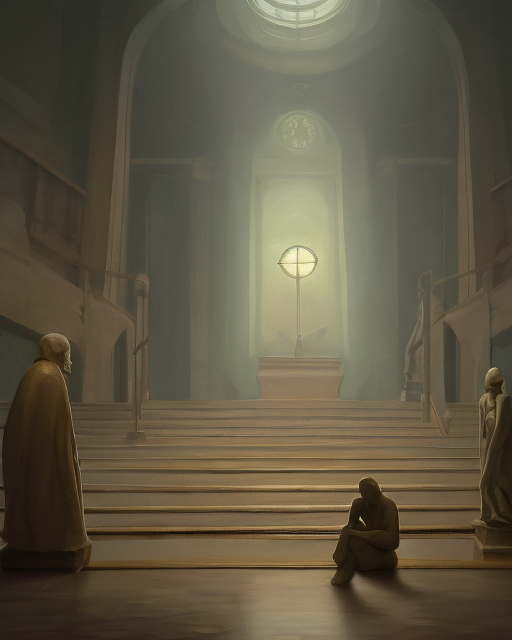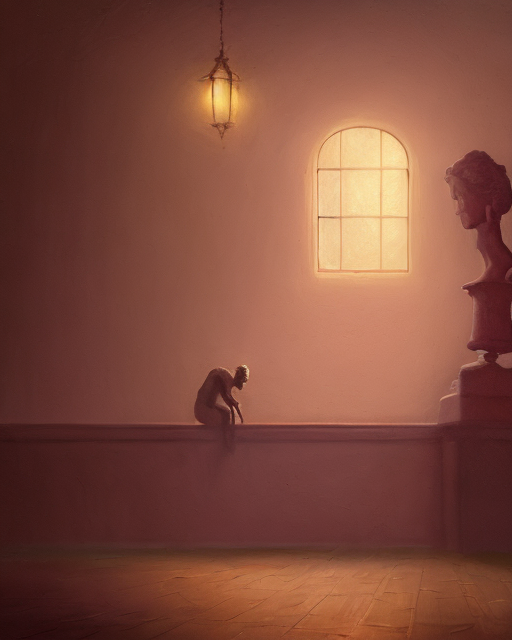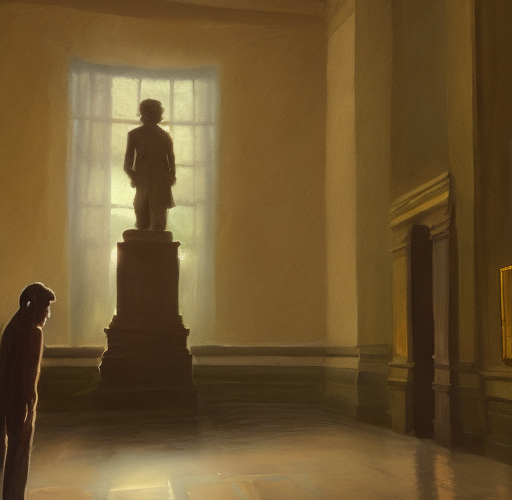Dreaming of immersing oneself in a world far from the daily grind is a sentiment many share, fueled by the desire to escape and explore the unknown. For art lovers, the museum is seen as a sacred place, a sanctuary where time stands still, artworks unveil age-old tales, and the walls exude an aura of silent reverence. But what if we could experience this sacred space in an entirely innovative way? Imagine spending an entire night inside a museum, a night where dim lights caress masterpieces and the sound of your footsteps echoes in otherwise silent rooms.
From the early hours of twilight until dawn, the museum transforms. Shadows dance on the walls, paintings seem to come to life, sculptures appear to watch you. This scenario may seem surreal, but its psychological impact is profound.

Firstly, such an experience offers you a unique opportunity to confront yourself. In the intimacy of the museum, devoid of other visitors, a space is created for inner dialogue. Artworks become mirrors reflecting emotions, thoughts, aspirations.
Moreover, the very act of touching the artworks (a practice otherwise forbidden during a normal museum visit) can trigger a deeper connection with the art. Tactile perception opens a different channel of communication, allowing you to feel the roughness of a painting or the cold smoothness of a sculpture. A visceral connection is formed that leads to a better understanding of the artist’s intention, the story the work wants to tell.
This physical touch can also trigger a profound sense of belonging. Touching an artwork can feel like touching history, making contact with the past. This experience can provoke a sense of temporal continuity, making you feel part of a larger cycle of history and culture.
The silence of the night also amplifies your sensory experience. The background noise of the day, the chatting visitors, the footsteps on the floor, all disappear. You are left alone with the sound of your breathing, the beating of your heart, the echo of your thoughts. This silence can create a sense of peace, allowing you to fully concentrate on the art and your inner dialogue.

Furthermore, the night can reveal aspects of the artworks that might go unnoticed during the day. Dim lights can highlight specific details, create shadows that add another layer of interpretation. This new perspective can enrich your understanding of art and stimulate your imagination in unexpected ways.
A night in a museum can also offer the opportunity to confront the concept of solitude. In an ever-connected society, finding moments of true solitude can be rare. In an empty museum, you face yourself, your emotions, your thoughts. This solitude can be therapeutic, offering you space to reflect, meditate, dream.
Finally, spending a night in a museum can give life to a sense of wonder and curiosity that we often lose in the hustle of daily life. Art has the power to amaze, surprise, provoke. In the middle of the night, in an empty museum, this sense of wonder can be amplified, making the experience even more intense and unforgettable.
Living such an adventure manifests as an authentic and personal artistic journey. Art, indeed, is not just something to observe from a distance but can become a channel for personal evolution and introspection. In this light, spending a night in a museum could transform into a journey of self-discovery, an experience that gives you a unique perspective, not only on art but also on yourself.
It may seem an unusual concept, but when viewed from a psychological angle, it takes on special significance. It’s an invitation to pause, to establish a more intimate connection with art and with oneself. It’s an opportunity to dream, meditate, and probe the unknown. And who knows, it might just be the starting point for an engaging journey of self-understanding and the beginning of new experiences.












